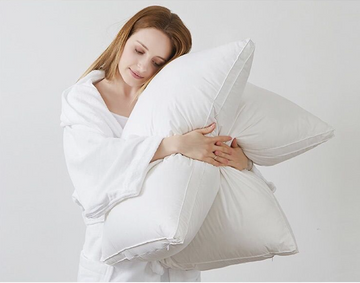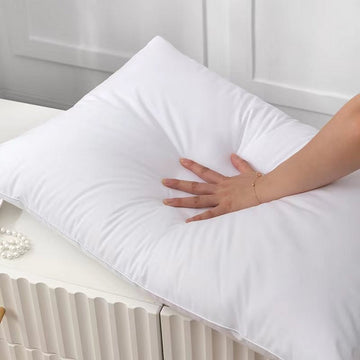Understanding Down: The Basics
What is Down?
Down refers to the soft layer of feathers found under the tougher exterior feathers of birds. It's known for its lightness and ability to trap heat, making it a popular filler for comforters, jackets, and pillows. Down comes from ducks or geese, and it's prized for its insulating properties. These feathers don't have quills like the outer feathers, making them extremely plush and compressible. This fluffy-under-feather layer keeps birds warm in cold temperatures. As a result, down-filled products offer superb warmth without adding weight, providing a cozy sleep experience.
Duck Down Characteristics
Duck down is known for its high-quality insulation. It comes from the soft layer found under the feathers of ducks. This down is less large than goose down, but still offers warmth. It's also more widely available, which often makes it less costly. Duck down clusters are slightly smaller and less dense compared to goose down. This can affect how well it traps air and thus, its insulating power. Duck down varies in quality, depending on the bird's environment and diet.
Goose Down Characteristics
Goose down is known for its premium quality and loft. Each cluster is larger than duck down, leading to better insulation. It also has a higher fill power, which measures fluffiness. Goose down is less common and more expensive due to its superior warmth-to-weight ratio. It is mostly collected from mature birds, making it denser and warmer. However, it may not be suitable for people with bird allergies.
The Comparison: Duck Down Versus Goose Down
Warmth and Insulation Abilities
When picking between duck and goose down, consider warmth. Both offer cozy insulation. Yet, goose down clusters are larger. This means more warmth without extra weight. Duck down is also warm. But you might need more to get the same cozy feel as goose down. Both types trap body heat efficiently. This makes them great for cold nights. Overall, goose down tends to edge out in warmth and fluffiness. But duck down is still a snug option for most climates.

Durability and Lifespan
When picking between duck and goose down, how long they last matters. Goose down typically outlasts duck down due to its larger clusters. This also means it can stay fluffy for longer, keeping comfort high over time. Duck down is durable too, but may compress more quickly. So, if you want bedding that’s a long-term investment, goose down might be the better choice.
Price and Affordability
When choosing between duck and goose down, price matters. Generally, duck down is less costly than goose down. This is due to the wider availability of duck down. Goose down, on the other hand, is often seen as more luxurious. It is pricier, as geese are less common and their down is often denser. Still, price can reflect quality, but not always. It's important to check the fill power and purity of the down. Even a lower-cost duck down can be a good buy if it has a high fill power. In contrast, a cheaper goose down with low fill power may not be worth the extra money. So, it's crucial to balance cost with the quality you're seeking.
Choosing Your Down Comforter
Considering Allergies and Hypoallergenic Properties
When picking a down comforter, think about allergies. Not all down is the same for sensitive sleepers. You might need a hypoallergenic option. Here is what to know. Goose down can trap more allergens than duck down. It's because of its larger clusters. Also, some comforters have special covers to block allergens. Look for 'hypoallergenic' labels on products. These items go through extra cleaning to remove irritants. Always check the fill power and type of down used. This info can help you make a safer choice for your health. Remember to read the care labels. They often include tips to keep allergies at bay. Simple measures can create a comfy, allergy-free sleep zone.
Maintenance and Care Tips
To keep your down comforter in top shape, follow these simple tips:
- Wash Sparingly: Down comforters don't need frequent washing. Spot clean small stains and air it out occasionally.
- Gentle Cycle: If washing is needed, use a gentle cycle with mild detergent on a large commercial machine.
- Low Heat Drying: Dry your comforter on a low heat setting. Add tennis balls in the dryer to prevent clumping.
- Avoid Harsh Chemicals: Steer clear of bleach and fabric softeners. They can damage down.
- Storage: Store your comforter in a breathable bag in a cool, dry place when not in use.
Proper care extends the life and effectiveness of your down bedding.
How to Pick the Right Down for Your Climate and Sleep Preferences
Picking the right down for your climate and sleep style is key. Here are simple tips:
- For cold climates, go for a high fill power goose down. It offers the best warmth.
- In mild climates, duck down is a solid, cost-effective choice.
- If you sleep hot, choose a lighter fill weight down comforter.
- For those who feel cold at night, opt for heavier down with more fill weight.
By matching down types to your climate and sleep habits, you ensure cozy nights.
Referencing articles to compare the differences between Down vs Feather Pillow.:The Ultimate Guide: Choosing Between Down vs Feather Pillows







